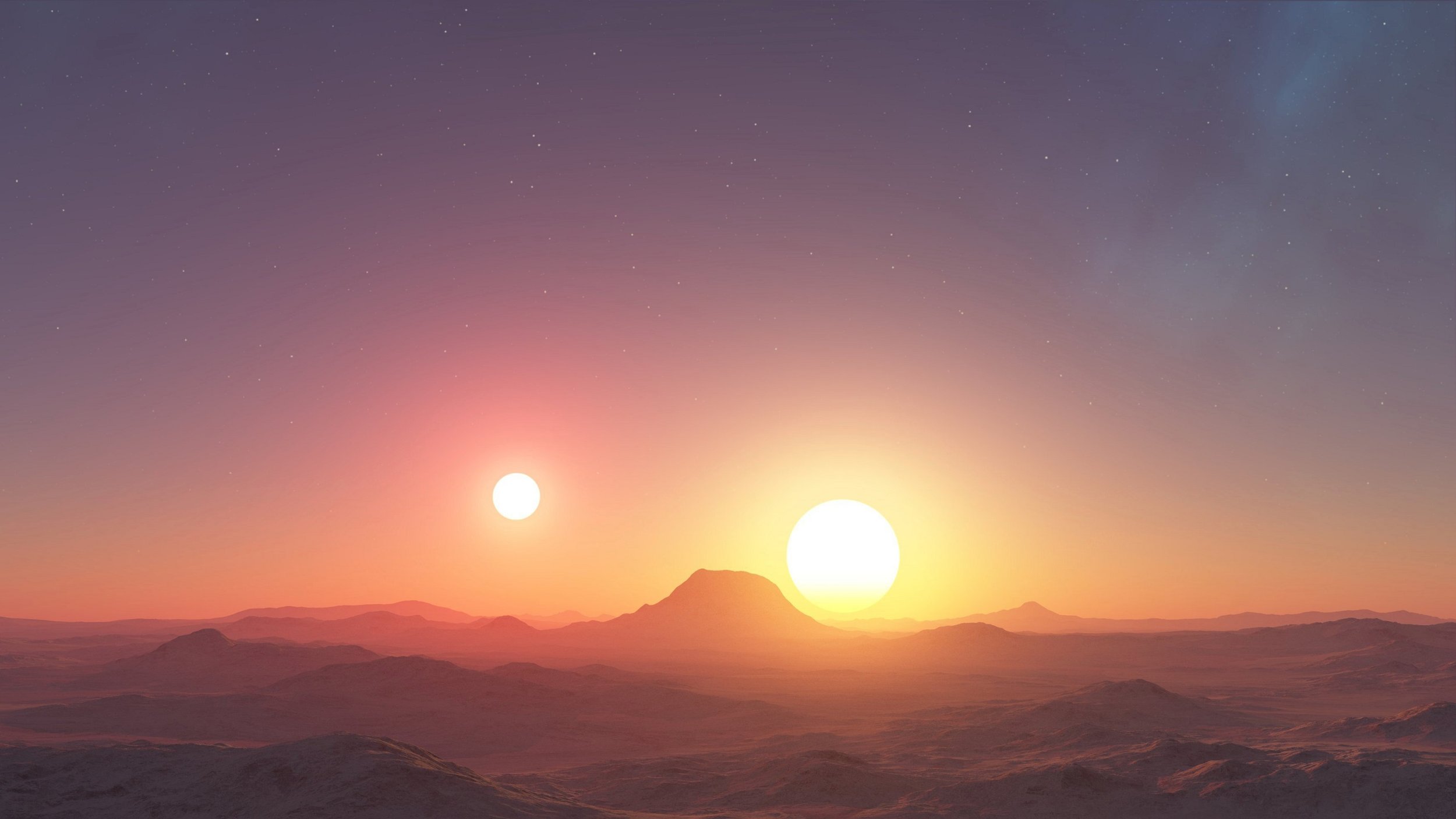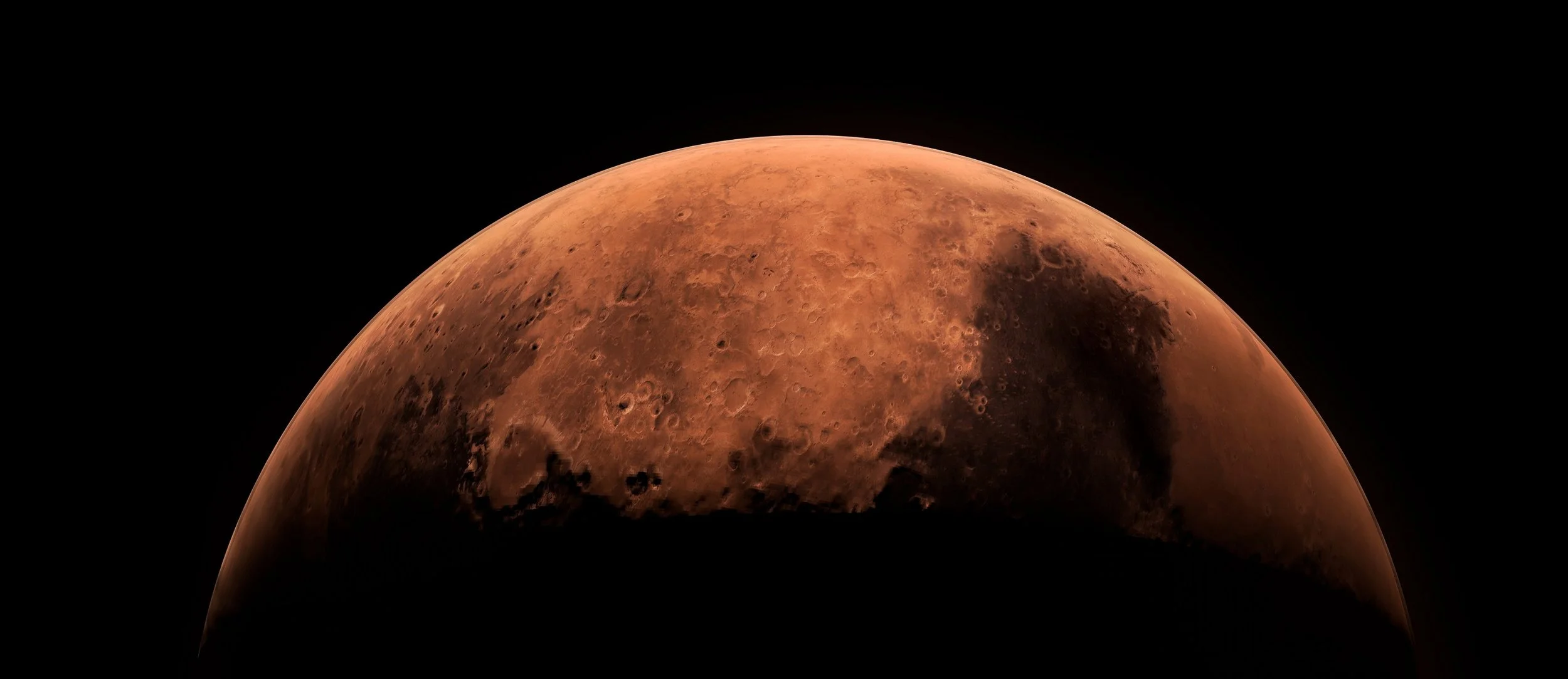An international team of astronomers, led by scientists at the University of Birmingham, has reported the second-ever discovery of a multi-exoplanetary circumbinary system in the peer-reviewed journal Nature Astronomy.
Circumbinary systems contain planets that orbit around two central stars like in the fictional desert planet, Tatooine from Star Wars, rather than one, as is the case in our own Solar System.
An artist's impression of a planet orbiting two central stars - (Image Credit: WWWoronin via Shutterstock / HDR tune by Universal-Sci)
The team named the freshly identified planet, BEBOP-1c (BEBOP is an acronym for Binaries Escorted By Orbiting Planets). BEBOP-1c is part of the BEBOP-1 AKA TOI-1338 binary star system, located in the constellation Pictor, aproximatly 1,320 light-years away from Earth.
a Tatooine-like planet
BEBOP-1c's discovery will probably catapult the minds of space enthusiasts and Star Wars fans alike to the sands of the iconic fictional planet Tatooine. Known for its dual sunsets, Tatooine, a circumbinary planet, is orbited by two suns, much like the BEBOP-1 system.
This real-life celestial mirroring of the Star Wars universe's Tatooine adds a dash of sci-fi fantasy to the world of astronomical research, compelling us to ponder the possibilities beyond our known cosmos.
In 2020, a circumbinary planet, TOI-1338b, was discovered in the same star system using data from NASA’s TESS space telescope, which the Birmingham team also contributed to.
The new discovery was made with the use of the transit method. A very successful exoplanet detection method with which planets are detected via the dip in a host star’s brightness as they pass in front of it from our viewpoint.
While BEBOP-1c and its sister planet, TOI-1338b, might not harbor moisture farms or Jedi, they undoubtedly advance our understanding of circumbinary planets and, perhaps, push us one step closer to a galaxy far, far away.
Surprise discovery
Dr Matthew Standing, the lead author of the study and a researcher at The Open University, stated, “The transit method allowed us to measure the size of TOI-1338b, but not its mass, which is the planet’s most fundamental parameter.”
At the time, the BEBOP team was using a different detection method, known as the radial velocity method (AKA the Doppler method). This approach, relies on the gravitational effects exoplanets have on their host stars.
As a planet orbits, its gravitational pull causes its host star to move in a small circular or elliptical pattern. This motion results in changes in the star's light spectrum, shifting towards red as the star moves away from us and blue as it moves closer (doppler effect).
By observing these shifts, astronomers can estimate the minimum mass of the planet and its orbital period. This method works best for large planets in close orbits around their stars, but only provides a minimum mass due to uncertainties in the planet's orbital tilt.
Using high-end instruments installed on two telescopes located in the Atacama Desert in Chile, the team tried to measure the mass of the planet detected by TESS. While they didn’t succeed in that effort, they accidantally discovered a second planet, BEBOP-1c, and measured its mass.
Only the second multi-exoplanetary circumbinary system
“Only 12 circumbinary systems are known so far, and this is only the second that hosts more than one planet,” said David Martin, an astronomer and Sagan Fellow at the Ohio State University.
BEBOP-1c, which has an orbital period of 215 days and a mass 65 times larger than Earth, was difficult to confirm due to disruptions caused by the COVID-19 pandemic. Despite this, the team was able to finalise the detection in the following year.
Circumbinary planets, despite being rare, are important for advancing our understanding of planetary formation.
“Planets are born in a disc of matter surrounding a young star, where mass progressively gathers into planets,” explains Dr Lalitha Sairam, a researcher at the University of Birmingham and the second author of the study. "In circumbinary geometries, the disc surrounds both stars, making it easier to pinpoint the location and conditions of planet formation compared to single stars like the Sun.”
The team aims to use the transit method to measure the size of BEBOP-1c. Also, while they were not able to detect the inner planet, TOI-1338b, the team managed to put a strict upper limit on its mass. It is now known that the planet has a density ‘‘lower than a Victoria Sponge cake’’, making it a prime candidate for further study with the James Webb space telescope, which could reveal the chemical environment in which this unusual circumbinary planet formed.
If you are interested in more details about the study be sure to check out the paper published in the peer-reviewed science journal Nature.
Sources and further reading:
What’s a transit? (NASA exoplanet exploration)
Radial-velocity discovery of a second planet in the TOI-1338/BEBOP-1 circumbinary system (Nature Astronomy)
James Webb Space Telescope (NASA Goddard Space Flight Center)
Too busy to follow science news during the week? - Consider subscribing to our (free) newsletter - (Universal-Sci Weekly) - and get the 5 most interesting science articles of the week in your inbox
FEATURED ARTICLES:








The way you prepare your vegetables affects their nutritional value. What is the healthiest method to prepare them?